Concerns for families and home educators regarding Comprehensive Sexuality Education (CSE) implementation in the South African national school curriculum
Introduction
The recent uproar about Comprehensive Sexuality Education in the South African national school curriculum is ongoing, and there is distinct disagreement on whether it benefits or harms learners. There is also conflict regarding transparency and infringement on parents’ rights. This article will discuss both these points, along with the impact on homeschoolers of CSE and its inclusion in the BELA Bill.
What is CSE?
Comprehensive sexuality education teaches children about the various cognitive, emotional, physical and social aspects of sexuality through a nationally implemented curriculum.
According to the Department of Basic Education’s (DBE) statement from 29 October 2019, the “…core aim of the CSE…is to…help learners build an understanding of concepts, content, values, and attitudes related to sexuality, sexual behavior change as well as leading safe and healthy lives.”
What topics does the CSE cover?
CSE is implemented in Grade 4-12 lesson plans. The Educator Guide and Learner Books cover the following topics:
- Relationships
- Values, rights, culture, and sexuality
- Understanding gender
- Violence and staying safe
- Skills for health and wellbeing
- The human body and development
- Sexuality and sexual behaviour
- Sexual and reproductive health
How does it connect to the BELA Bill?
The BELA Bill will, if passed as law, require ALL homeschooling families to use a curriculum that covers the same content and skills as the national curriculum. If CSE is not amended or scrapped, it will remain part of the national curriculum, forcing all homeschooling families to cover its content in their studies.
The implication for homeschoolers
Homeschoolers are independent-thinking families who strive to give their children the best education possible, based on freedom of choice regarding content and methods. This individualised approach which enables different cultures and religions to pass on their own values will be threatened in a very sensitive area if the BELA Bill is passed with CSE included in the national curriculum. Parents will be forced to teach their children information on sexuality that does not necessarily align with their personal religious convictions and values, and this is an infringement on parental and religious rights.
“When the BELA Bill is promulgated, state officials will likely use it to put more pressure on home educators to follow the national curriculum,” says Bouwe van der Eems, chairman of the Pestalozzi Trust (legal defence organisation for South African home educators). He adds, “This does not mean that families have no choice. However, if parents decide not to follow the national curriculum because they believe it is not in the best interest of their children, the potential for conflict in court between families and the state increases.”
It’s about more than the controversial content and approach of CSE. Freedom of and freedom for education as a whole is at stake.
Review of the DBE’s claims about the CSE
To understand the objections to CSE, it is necessary to understand and investigate the claims the DBE makes.
1. The DBE states (29 October 2019) that their research found:
- CSE does not sexualise children;
- Sexuality education does not increase sexual activity, sexual risk-taking behaviour or STI/HIV infection rates. On the contrary, CSE delays sexual debut and promotes safe sexual behaviour; increases knowledge of different aspects of sexuality and the risks of early and unintended pregnancy, HIV and other STIs;
- Decreases the number of sexual partners;
- Reduces sexual risk taking;
- Increases the use of condoms and other forms of contraception.
This research is based on a review of the International Technical Guidelines on Sexuality Education.
Problem: Subsequent studies by the Institute for Research and Evaluation in 2018 and 2019 (which use UNESCO’s data) demonstrate a clear risk of harming children and in fact show the exact opposite results of those stated above.
2. The DBE claims that “there is no new content that has been added to the Life Orientation (LO) subject in schools”, however, in their own press release (and in the introductions to their manuals) it’s mentioned that the content was “reviewed” to better align it with the International Technical Guidelines on Sexuality Education (ITGSE).
Problem: Reviewing for better alignment by definition implies change. Secondly, the ITGSE was partly sponsored by the pro-abortion agency, Planned Parenthood and it was also rejected by the UN General Assembly.
3. The DBE claims that they have through “various consultation platforms allowed for the evolution of the content…” Moreover, the “School Governing Body, School Management Team, teachers and parents are orientated on the lessons, as it is our principle to orientate parents when we introduce new lesson plans.”
Problem: The research they use to claim positive outcomes was not positively verified by independent studies, but disproven. If all the relevant role players (members of electorate, school governing bodies, teachers, and parents) were in fact consulted before compilation and implementation of CSE, the outcome would’ve been vastly different. Teachers’ unions wouldn’t be up in arms threatening to strike because they are uncomfortable with teaching the material. The approach was totalitarian, undemocratic, and therefore unconstitutional. As Michael Swain, executive director of Freedom of Religion SA says, “Orientation is not consultation.”
Summary of concerns regarding the CSE
For all the promises of positive outcomes and good intentions of the DBE’s implementation of CSE, trust and crucial elements are sorely lacking in the process, namely:
- Lack of consultation with parents and teachers, the primary stakeholders.
- Lack of recognition of parents’ rights and more of an overstepping of them. “According to binding international law, parents are primarily responsible for, and entitled to, educate their children according to their own values and beliefs. These rights are confirmed and reinforced in the South African Department of Education’s White Paper on Education and Training (Chapter 4, item 3). The Department must, therefore, respect parents’ rights to decide what is (or is not) appropriate when teaching their children about sex and sexuality.” (Michael Swain)
- Lack of transparency – parents and teachers should be given the opportunity to review all the CSE materials before they are presented to learners.
- Lack of financial disclosure – the funders of the program and the extent of their involvement have not been disclosed to the public. There may be biased and harmful conflicts of interest, to the detriment of the curriculum and the children who are subjected to it.
- Lack of opt-out – parents should be given the option to withdraw their children from CSE classes without sanction.
- Lack of unbiased, untainted research – given the disturbing discrepancies discussed above, the DBE must take responsibility to objectively review ALL the facts and independent studies, consult with the primary stakeholders and ensure that all adjustments to the program will truly be in the best interests of the children.
What can we (families and homeschoolers) do about it?
This debate will not be over soon. Bouwe says, “The end game of the problems we have with BELA Bill and CSE will be in the courts. However, what we do now can influence the end game. When this dispute ends up in court, and nobody ever complained when CSE was introduced, the court might not take your opinion seriously. However, if thousands of parents objected against CSE, the court will be more inclined to listen. This is why as many parents as possible must object against the introduction of CSE.”
Christopher Cordeiro (advisory trustee to the Pestalozzi Trust) adds, “The courts will look at a balancing of rights, i.e. your rights as a parent religious freedom/freedom of belief and the best interests of the child. We do still have a number of opportunities to influence the content of the BELA Bill. A key constitutional argument against BELA, the Policy, and the proposed regulations is that the State cannot enforce one curriculum or curriculum statement on all citizens.”
Be informed, be prepared, be united
In short, get involved! Make your voice heard on the matter.
- Write to Parliament. Write in your own words what your objections are to the proposed CSE. Urge Parliament to enter into extensive public participation to find solutions to the problems that CSE attempts to solve, without infringing on children’s rights to appropriate parental care and everyone’s right to religious freedom.
- Support the campaign by the Family Policy Institute to stop CSE.
- Share this article and the campaign with your friends and family, encourage them to join the petition.
- You can also follow the latest news on the subject at SAHomeschoolers.org.

Legal & Research
Centres
Homeschool ABC
Support
Curriculums
Learn, code and create with Ubbu
Introducing ubbu!An Adventure of Code and Play! Learn, Code ...
GED through Learnalot - Grade 12 ...
Why enrol with Learnalot? With Learnalot, you have the flexibility ...
Elroi Academy (Gr 8 - 12)
Elroi Academy – Top-Rated Distance Education Provider in South ...
Has no content to show!











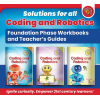


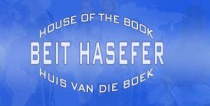




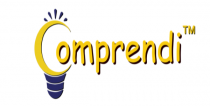





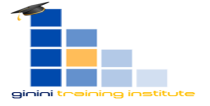





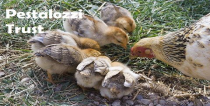

Comments 1
The Department of Basic Education has developed scripted lesson plans (SLPs) for its program of Comprehensive Sexuality Education (CSE) which it is currently piloting in a number of schools around the country and plans to implement wholesale possibly as early as 2020.
SLPs consist of Educator Guide (EG) and Learner Book (LB) for each grade covered by the program, beginning with later grades and working down to earlier grades.
The themes found throughout the SLPs, though often not explicit, are largely in keeping with those found in UNESCO's guide on CSE, upon which this program is based. These include transgender notions, sexual rights of women and liberal views of sexuality.
Some of these are highlighted below.Page references to these books are given here in an abbreviated form, for example G8 LB, p29 refers to the Grade 8 Learner Book, page 29.
1. Level of guidance
The program emphasises the need to consider the consequences of the choices one makes, but then generally avoids advising on a specific choice.
For example, the choice of abstinence is discussed here only in terms of avoiding STDs and unwanted pregnancies: “The safest choice is abstinence. For teenagers who choose to have sex, they must use a method of contraception and a condom every time they have sex.” (G8 LB, p29)
Similarly: “Sex at the right level of maturity and life circumstance can be a pleasure… in a romantic / intimate relationship” (G11 LB, p44)
In these examples, note the avoidance of further guidance.
This level of guidance is fairly consistent throughout the program. The program appears to represent health risks somewhat incompletely. For example condom use is described as “safer” than unprotected sex (G8 LB, p29), but still apparently still considered a healthy choice due to the frequent emphasis on using condoms. Similarly, a disadvantage of contracting an STD is discussed in terms of feeling embarrassed at school: “If I contract an STI I would be too embarrassed to see my tutor” (G9 EG, p37)
2. Behaviours that are being normalized
In Grade 9, these are suggested as positive choices: “I will STAY FAITHFUL to one sexual partner at a time…” , “I will take AT LEAST a 3-month break between sexual partners” (G9 LB, p15)
In Grade 9 learners are made to participate in an unscripted role play involving propositioning and refusal to have sex without a condom (G9 LB, p88).
In Grade 9 learners are made to participate in an unscripted role play where “[two 16-year-olds] really like each other and they really like kissing, but neither one is really ready to have oral sex or sexual intercourse.” “Hey… I think we’re ready to take our relationship to the next level… sexually, I mean” (G9 LB, p91)
Thus propositioning, negotiation and early sexual engagement are seen here as being portrayed as norms for children and young people.
The program is consistent in the behaviours it normalizes.
3. Readiness of learners
The program contains graphic textual and pictoral content describing scenes where sexual advances are being made, involving the removal of clothing, touching, kissing, breathing and so-on. (G4 LB, p48; G5 EG, p57; G5 EG, p67)
Younger children are required to colour in private parts of a naked male and of a naked female. They then have to tell the rest of the class what they consider to be “private parts”.
The program emphasises that in refusing to participate in sexual engagement it is important to seek a win-win situation, if possible, where alternatives are suggested (by the refuser) that both parties could feel happy about.
4. Treatment of traditional concepts of marriage and parenthood
The program deemphasises traditional notions of marriage and responsibility of parenthood. For example, most of the references to sexual relationships are outside of the context of marriage, and outside the context of the responsibility of parenthood.
The impacts of early sexual experimentation on future relationships are somewhat deemphasized: “Remember, even if you have had a sexual relationship before, you may choose to abstain from having a sexual relationship now. Times change and people change their minds and their behaviour as they go through life.” (G11 LB p44)
The program suggests that any unintended side-effects of unplanned parenthood can be addressed via sexual health (abortion) services.
5. Treatment of sexual identity
Learners are encouraged from a young age to think about their sexual identity: “Andrea prefers playing with boys. She sometimes feels like a boy” (G4 LB, p49) , “we can be heterosexual, homosexual or bisexual” (G8 LG, p20)
6. Treatment of the role of the parent
Learners are encouraged to educate their parents and communities: “... your learners… take home new ideas, and share with their parents the importance of behaviour change and good decision-making …” (G6 EG, p4) , “.. with the result that those healthy [life] choices find their way back into their homes and communities” (G6 EG, p5)
Provision is made for girls to know at which age they require parental consent or knowledge to make use of sexual health services (for example for having an abortion).